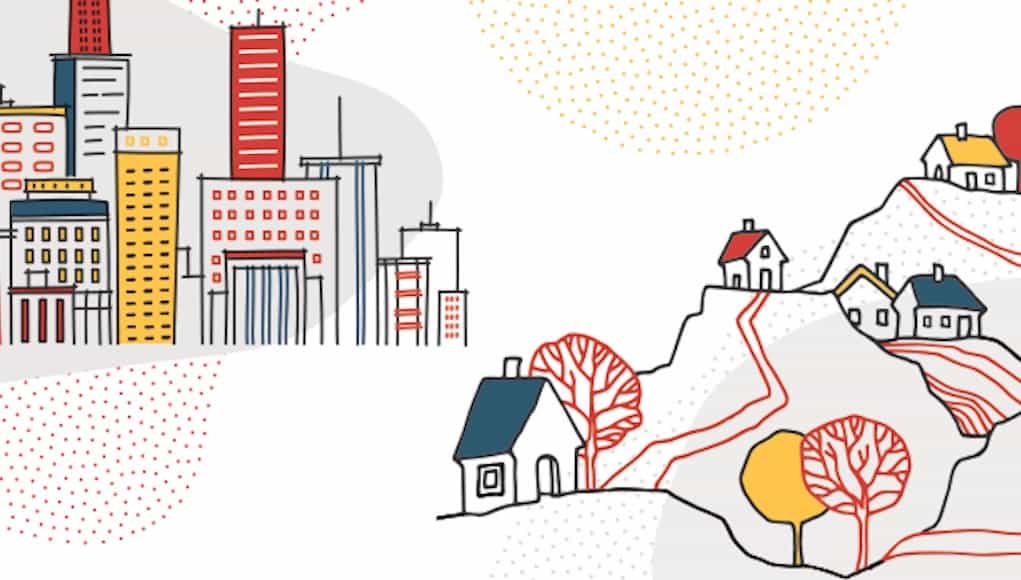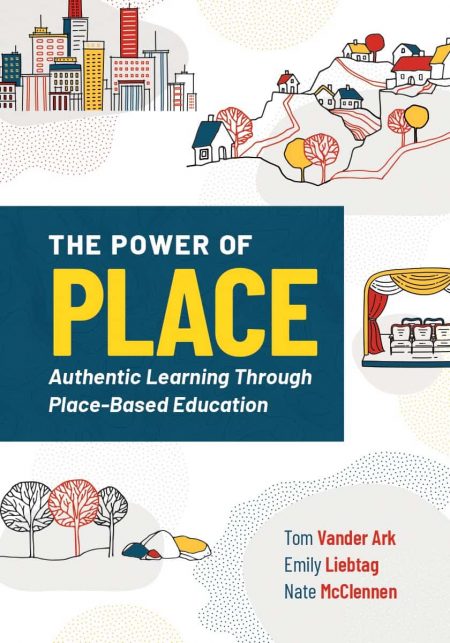The Power of Place: Authentic Learning Through Place-Based Education

“Place: it’s where we’re from; it’s where we’re going. . . . It asks for our attention and care. If we pay attention, place has much to teach us.”
We are so excited to announce that today, “The Power of Place: Authentic Learning Through Place-Based Education” by Tom Vander Ark, Emily Liebtag and Nate McClennen is OUT!
The Power of Place identifies six defining principles of place-based education. Namely, it:
- Embeds learning everywhere and views the community as a classroom.
- Is centered on individual learners.
- Is inquiry-based to help students develop an understanding of their place in the world.
- Incorporates local and global thinking and investigations.
- Requires design thinking to find solutions to authentic problems.
- Is interdisciplinary.
The authors wrote the book with the goal of it being a resource and guidebook that dispels the notion that place-based education is an approach limited to those who can afford it. Readers will find numerous examples and descriptions of how schools in diverse contexts (urban and rural, public and private) have adopted place-based programs as a way to better engage students and attain three important goals of education: student agency, equity and community.
Over the last few years, we’ve done loads of writing on why place-based education is important and powerful which you can see here, but we think it’s best if you hear why place matters to the authors:
Tom Vander Ark: I remember the sound of running water, the smell of damp logs, and the thrill of finding a tadpole in Sligo Creek. I was 11 and had time to dawdle. Years of battlefield and museum tours in and around Washington, D.C., introduced me to design and the way it can shape our lives. I knew I’d be an architect or engineer.
Awestruck a year later, I stood on a glacier at 14,000 feet, bracing against a 50-mile-per-hour wind and feeling very small against the vast expanse of the Colorado Rockies. Glaciology studies–that was the field for me (at least until frostbite and a girlfriend changed my mind). My interest in engineering and rocks sent me to the Colorado School of Mines and got me a good first job.
I’m the sum of the places I’ve been and the experiences I’ve accumulated. It wasn’t my parents preaching contribution that convinced me of the merits of service; it was the urban ministries they brought me to for a decade. It wasn’t a picture of the Rockies that won my heart; it was the paradox of fear and wonder that came with being in a spectacular remote setting. It wasn’t any of the classes I took in college that I remember; it was work in strange and wonderful places that shaped my path. Place is powerful, personal and persuasive.
Emily Liebtag: In my first couple of years as an elementary school teacher, I didn’t pay much attention to where students were from or their connection to their communities (although I should have). Once I realized the value and strengths of these connections, I had an entirely new perspective on teaching and learning. I began to realize the incredible amount of untapped potential and creativity in the students that I was trying to contain in my traditional, four-walled classroom. My own most powerful learning experiences have been deeply rooted in place and connected to my community–so why wouldn’t this also be true for my students?
There is nothing more incredible than witnessing one of nature’s finest phenomena, more invigorating than being uncomfortable and curious in a new culture or context, and more humbling than helping tackle an issue in your own community.
Nate McClennen: Something unexpected happens when you explore a community for the first time. Your worldview shifts with each question, each interaction, and each inquiry. You understand the place more deeply, and yet the deeper you go, the more you realize you have to learn. This is the power of place—it’s an infinite mystery that continually leads to awe and wonder.
Pragmatically, my most important learning has come from place—in the outdoors, jobs, conversations and explorations—all teaching skills and knowledge that were just as important as what I learned in school. I see that I can make an impact. I see that I can always learn. And I see that my actions create ripple effects across ecosystems and nations. This is what our young people need to learn—that they matter and that it starts with understanding and appreciating their local place.
[button link=”https://shop.ascd.org/Default.aspx?TabID=55&ProductId=240098338&The-Power-of-Place:-Authentic-Learning-Through-Place-Based-Education” type=”big” newwindow=”yes”]CLICK HERE TO BUY THE BOOK[/button]
How Can You Join The Place-Based Movement?
- Join the Conversation: Follow #PowerofPlace and #PlaceBased on Twitter to learn more about place-based education and connect to a network of leaders and learners passionate about place.
- Speaking Engagements: Want to bring the power of place to your next event? The Getting Smart team is available to keynote your next event about the power of place and community.
- Book Chats: Let’s have an intimate discussion about the book and its themes. Getting Smart is available to facilitate a discussion on place and community and discuss the ways in which place-based education contributes to equity and student-agency.
- Workshops: Planning out your summer professional development? Invite Tom to lead a workshop with your school, community or organization on how to make place-based education a priority.
- Visit our Power of Place Campaign Page: Access all of our place-based blogs, podcasts and other resources to start your learning here.
If you’re interested in any of the above opportunities contact us!
For more, see:
- Why Place-Based Education?
- Get Kids in the Community and Change the World
- Avoid Summer Brain Drain with Place-Based Learning
Stay in-the-know with innovations in learning by signing up for the weekly Smart Update.





0 Comments
Leave a Comment
Your email address will not be published. All fields are required.